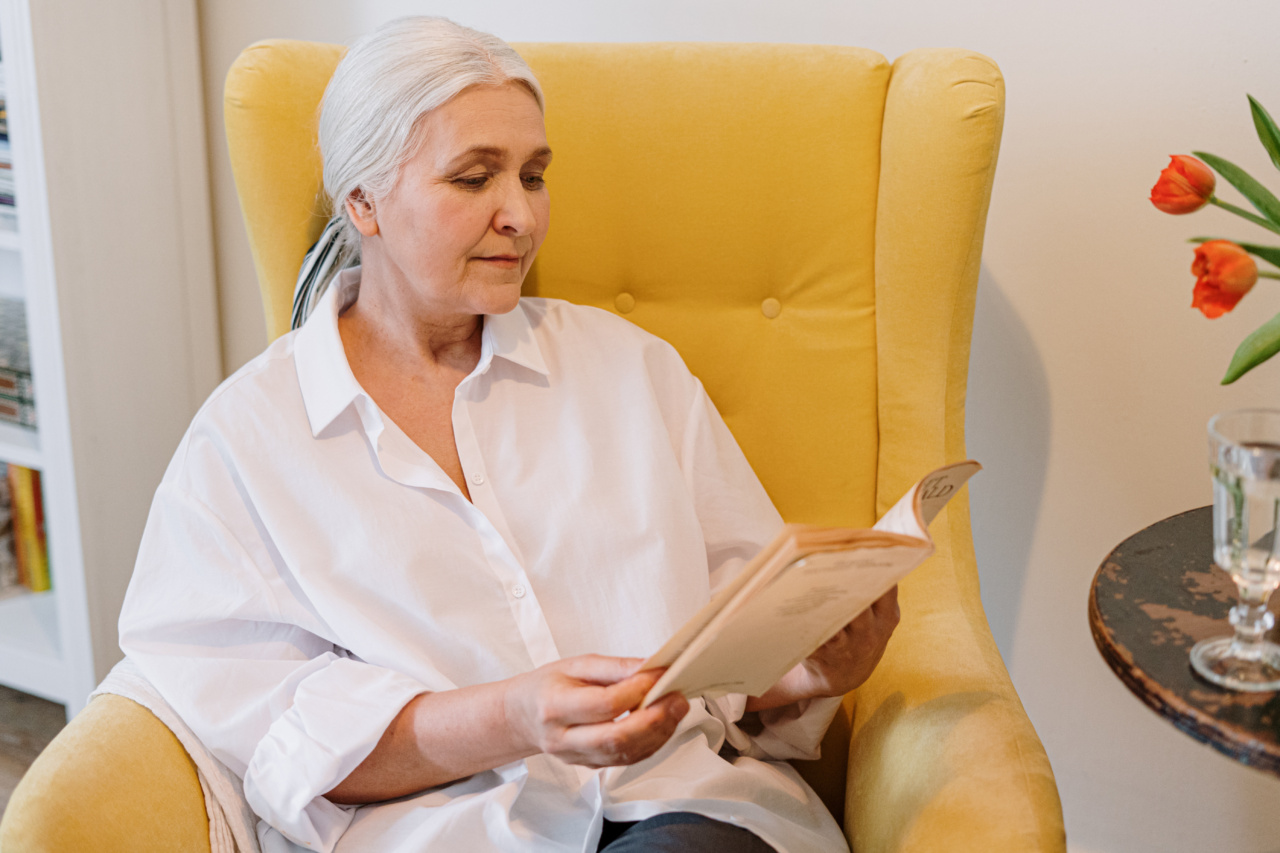As the world population continues to age, the issue of elderly isolation has increasingly become a matter of concern. Many elderly individuals find themselves living alone or in nursing homes, separated from family, friends, and the outside world.
This isolation can have a detrimental impact on their mental well-being and overall quality of life. In this article, we will explore the dangers of elderly isolation on mental health and discuss ways to address and prevent this issue.
The Impact of Loneliness on Mental Health
Loneliness is more than just a fleeting feeling of sadness or being alone. For the elderly, it can be a chronic state of social isolation that leads to severe mental health consequences.
Research has shown that loneliness and social isolation in older adults can contribute to an increased risk of developing depression, anxiety, cognitive decline, and even dementia. The negative impact on mental well-being is further exacerbated when individuals lack meaningful social connections and activities in their daily lives.
The Role of Social Connections in Elderly Mental Health
Human beings, regardless of age, are inherently social creatures. We rely on social connections and interactions to maintain our mental well-being. For the elderly, these social connections play an even more critical role.
Regular social interactions help combat feelings of loneliness and isolation, provide emotional support, and contribute to a sense of purpose and fulfillment.
When seniors lack social connections, they are more likely to experience negative emotions such as sadness, frustration, and helplessness.
The absence of regular social engagement can lead to a decline in cognitive abilities, as the brain is not actively stimulated through conversations and social activities. Moreover, without social interactions, seniors may become more susceptible to developing mental health disorders such as depression and anxiety.
The Importance of Preventing Elderly Isolation
Preventing elderly isolation should be a priority in society as it directly impacts the mental well-being of seniors. Addressing this issue requires a multi-faceted approach that involves individuals, communities, and healthcare providers.
By understanding the dangers of elderly isolation and taking proactive measures, we can help seniors maintain their mental health and improve their overall quality of life.
Creating Supportive Communities
Communities play a pivotal role in ensuring the well-being, inclusion, and active participation of the elderly population. The creation of supportive communities can significantly decrease the risk of isolation among seniors.
Here are some strategies that can be implemented:.
1. Community Centers and Senior Programs
Community centers and senior programs provide a space where elderly individuals can engage in social activities, participate in interest groups, and maintain a sense of belonging.
These centers can offer a wide range of programs, from exercise classes and hobby clubs to educational seminars and support groups.
2. Volunteer Programs
Volunteer programs can connect older adults with opportunities to give back to their communities. Participating in volunteer work not only helps combat isolation but also provides a sense of purpose and fulfillment.
Older adults can contribute their skills, knowledge, and experience to various causes, allowing them to make a meaningful impact and enhance their mental well-being.
3. Intergenerational Activities
Bringing together different generations can have a profoundly positive effect on both elderly individuals and younger generations.
Intergenerational activities promote social interaction and understanding while breaking down stereotypes and age-related barriers. Programs can be organized in schools, community centers, or nursing homes, fostering connections and mutual support between seniors and younger individuals.
4. Access to Technology
Technology can bridge the gap between isolated seniors and the outside world, providing avenues for communication, learning, and entertainment.
By ensuring older adults have access to user-friendly devices and internet connectivity, they can connect with family and friends through video calls, join online communities, and access a wealth of information and services.
Supporting Family Caregivers
Family caregivers play a crucial role in the lives of elderly individuals, especially those who require assistance with daily activities.
Supporting family caregivers not only alleviates their burden but also helps prevent social isolation among their elderly loved ones. Implementing the following measures can significantly improve the mental well-being of both caregivers and seniors:.
1. Respite Care
Respite care offers temporary relief to family caregivers by arranging for someone else to care for their loved one.
This break can prevent caregiver burnout and allow caregivers to engage in their own social activities and self-care, reducing the risk of isolation.
2. Caregiver Support Groups
Support groups specifically designed for family caregivers provide a safe and understanding environment where they can share their challenges, experiences, and emotions.
These groups offer valuable emotional support, practical tips, and a sense of belonging to a community facing similar circumstances.
3. Education and Training
Educational programs and training sessions for family caregivers can equip them with the necessary knowledge and skills to provide better care and manage the challenges they may encounter.
By offering guidance and resources, caregivers feel more empowered, reducing their stress levels and enhancing their mental well-being.
Promoting Individual Efforts
While community support and caregiver assistance are crucial, individuals must also take steps to prevent isolation and maintain their mental well-being. Here are some strategies that can be employed:.
1. Joining Senior Centers or Clubs
Senior centers and clubs provide an opportunity to meet like-minded individuals and engage in various activities. This allows seniors to build new friendships, explore new interests, and expand their social network.
2. Pursuing Hobbies and Interests
Engaging in hobbies and personal interests can be a powerful way to combat isolation and enhance mental well-being.
Whether it’s painting, gardening, playing an instrument, or joining a book club, pursuing activities that bring joy and purpose can help seniors stay connected and maintain a positive outlook on life.
3. Seeking Professional Help
If feelings of loneliness and isolation persist, it may be beneficial for seniors to seek professional help.
Mental health professionals can provide valuable support through therapy or counseling, helping individuals navigate their emotions, build resilience, and develop coping strategies.
4. Maintaining Contact with Loved Ones
Regular communication with family and friends is crucial to prevent isolation. Whether it is through phone calls, video chats, or in-person visits (when possible), staying connected with loved ones provides a sense of belonging and support.
Conclusion
Elderly isolation poses significant risks to the mental well-being of older adults. The negative consequences of loneliness and social isolation can impact cognitive abilities, contribute to mental health disorders, and diminish overall quality of life.
By creating supportive communities, providing assistance to family caregivers, and promoting individual efforts, we can prevent and address the dangers of elderly isolation. It is imperative that society recognizes the importance of nurturing social connections for our elderly population and takes proactive measures to improve their mental well-being and overall quality of life.





























